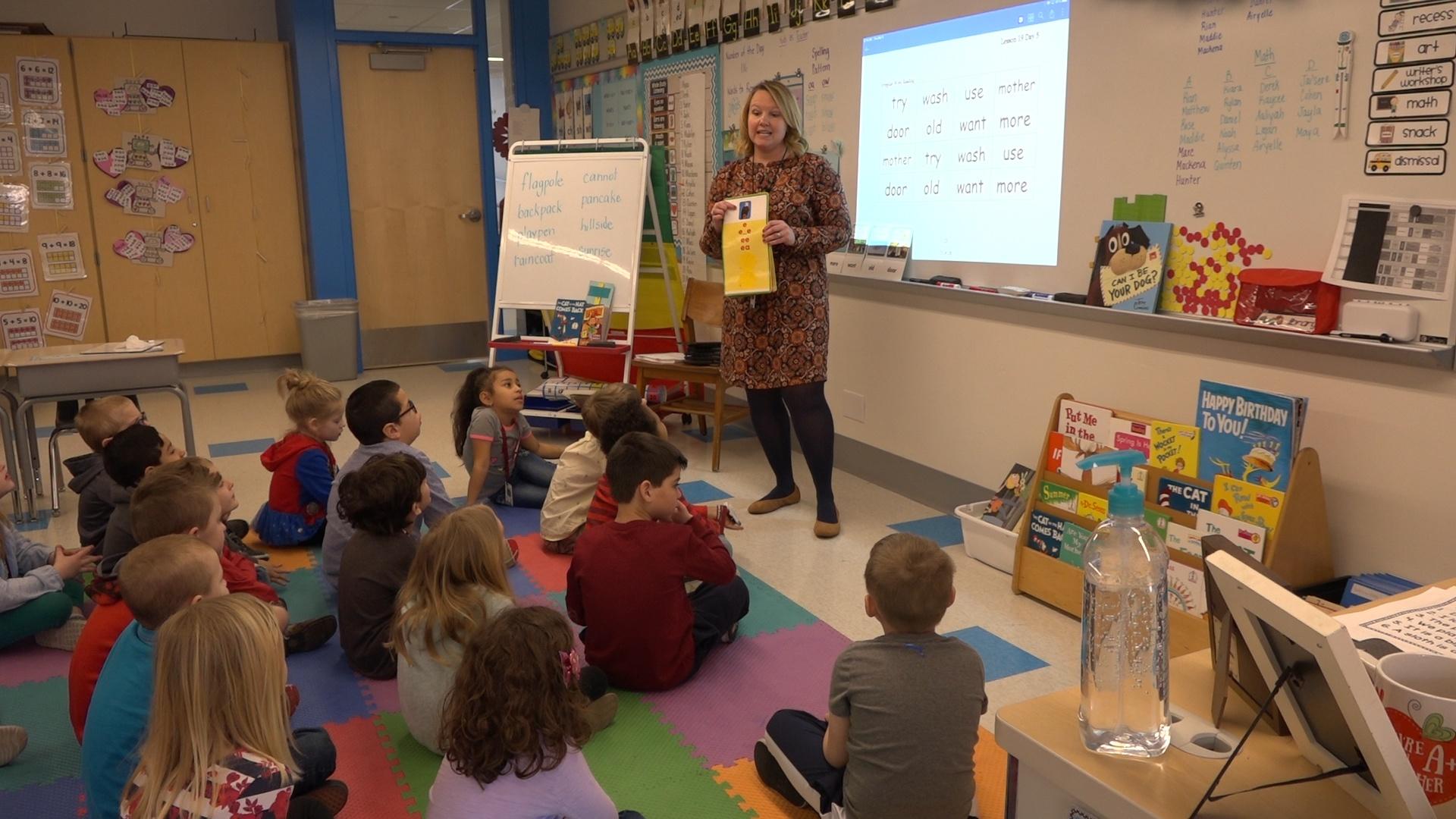BANGOR, Pa. (WLVT) - Heather Lilly is trying something relatively new in her first-grade classroom at Five Points Elementary School.
"The card is 'eagle.' Card?" she asks her students.
"Eagle," they reply.
"The sound is 'e.' Sound?" she continues.
"E."
The Bangor Area School District is part of a pilot program called Enhancing Core Reading Instruction (ECRI), which is designed to improve literacy through techniques including repetition, small group exercises, and reading intervention.
"It's a shift for a lot of teachers doing different things than they have typically done, even for myself being a teacher for many years," Lilly said.
The school district has been focusing on literacy over the past several years, launching an initiative in January 2013 to improve reading levels for students in grades kindergarten to third grade.
"We just sort of doubled down on academics and made academics a priority for the district, and everything sort of hinges on elementary reading to get all of that kicked off," said superintendent Dr. William Haws.
"If a student cannot read, it makes the rest of their educational career vastly more difficult," added Five Points principal Courtney Lepore. "So, we know that it's really important. We take the time to make sure that we dedicate the time and energy that we know we need to get them to grade level as quickly as possible."
In June 2012, 63 percent of K-3 students were meeting end-of-year grade level literacy standards. That number has increased every year, and now, it's at 89 percent -- the district's highest recorded performance.
Lehigh Valley Reads is a campaign powered by Lehigh Valley Public Media and United Way of the Greater Lehigh Valley to get all third graders in the region reading at grade level by 2025. Campaign director Angela Zanelli said Bangor’s success is an example for the rest of the Valley.
"This is systems change at its best, and it's not a sprint race. It's a marathon race," she said. "They're part of the Community School Network. They are a Leader in Me school, and, most importantly, they changed the way they were teaching their children how to read."
"It's just making sure that we teach the kids routines that stick through all of the different things that they need to do, so that we don't spend every day reteaching routines and that they're able to really focus in on what we want them to learn," Lilly said.
At Five Points, students spend two and a half hours on reading every day. Paraprofessionals and reading specialists support teachers in the classroom.
"It really is all hands on deck," Lepore said. "Kids get up, they switch, and they go where their needs can best be met."
"It's not just about, 'These are my students. Those are your students.' We collectively own these students," said Dr. Kristin Kruger, assistant superintendent. "We problem solve, we figure out what's going on with those students, and we make sure that they're succeeding in reading."
This year, the district combined students in kindergarten, first grade and second grade in the same building. Haws said it was a move to help teachers and students get on the same page.
"Having everyone together would allow us to sort of differentiate and target professional development, differentiate target instruction and make sure that all of our students were getting the exact same opportunities as they moved through the grade levels," he explained.
Lilly said she sees the benefits of the district’s initiative, noting her students have better reading accuracy and fluency, as well as better behavior overall.
The district said professional development, building teacher capacity and a data analysis process shaped the initiative.
"We're continuing with professional development in the upper levels as well," Kruger said. "They need to know the science of reading. They need to make sure that they're identifying students that are still struggling, so it doesn't stop."
"What we're involved in right now is really a starting point of an ongoing process that we hope is going to yield great things for the district," Haws said.
"I'm having emails and phone calls, just saying, 'My child is reading,'" Lilly said. "It's kind of like that light bulb turns on for them, and once they start that roller coaster of reading, they just kind of fly."
The latest performance numbers show 73 percent of K-3 students are performing at the “advanced” literacy level, as indicated by a midyear assessment -- another record for the district.




